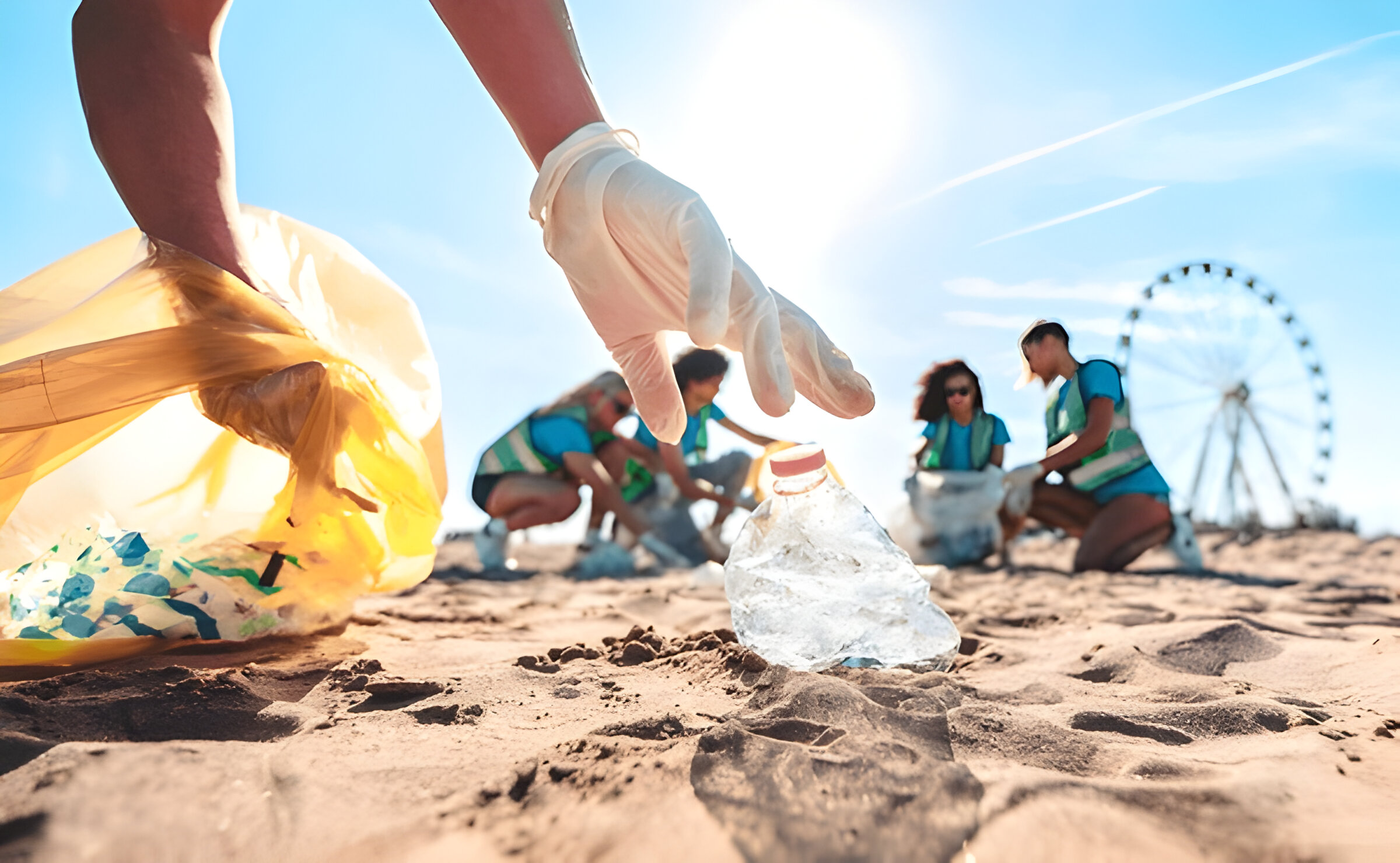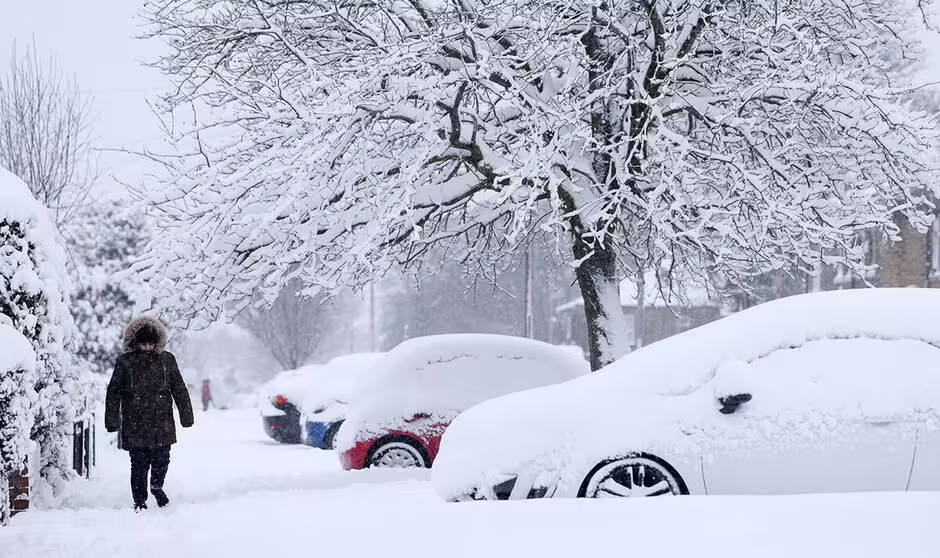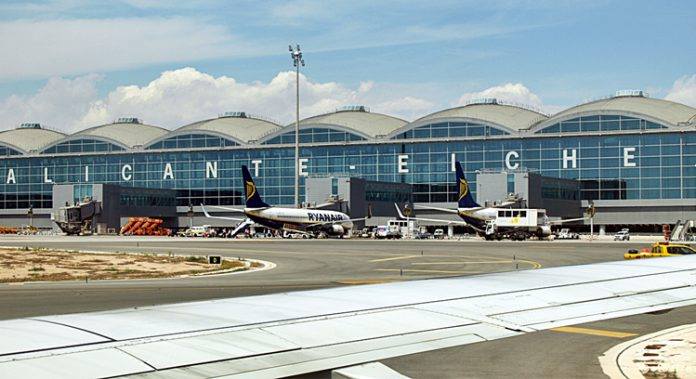Image Credit: Shutterstock
Plastic in the ocean has become one of the most pressing environmental issues of our time. Every year, millions of tons of plastic waste find their way into our oceans, causing a revolution in marine ecosystems and posing a significant threat to marine life. This pervasive problem has an influence on everything from microscopic plankton to massive whales, disrupting food chains and damaging habitats across the globe.
The sources of marine plastic pollution are diverse, ranging from single-use plastics like plastic bottles to microplastics that result from the breakdown of larger items. This article will explore the origins of plastic waste in the ocean, its impact on marine ecosystems, and the specific effects on various marine species. Additionally, it will touch on potential solutions, including improved waste management and recycling efforts, to tackle this growing crisis and protect our oceans for future generations.
Sources of Ocean Plastic Pollution
The influx of plastic into our oceans comes from various sources, both on land and at sea. Understanding these sources is crucial to addressing the issue of plastic pollution in marine environments.
Land-based sources
Land-based sources account for the majority of plastic pollution in our oceans, contributing 70% to 80% of the total plastic waste by weight. These sources include:
- Urban runoff: Trash and debris from cities and towns often find their way into waterways through storm drains and sewage systems.
- Litter: Improperly disposed of waste, including single-use plastics and packaging materials, can be carried by wind or water into rivers and eventually the ocean.
- Industrial and commercial facilities: Waste from manufacturing plants, ports, and marinas can contribute to plastic pollution.
- Landfills: Poorly managed landfills can allow plastic waste to escape and enter the environment.
- Agricultural runoff: Pesticides, fertilizers, and other agricultural chemicals can contain microplastics that end up in waterways.
Rivers play a significant role in transporting plastic from land to sea. Recent research has shown that approximately one million tons of plastic entered the oceans via rivers in 2015. Interestingly, only about one-third of the world’s river outlets contribute to this pollution, with the remaining two-thirds emitting almost no plastic to the ocean.
The Philippines stands out as a major contributor, with seven of the top ten plastic-emitting rivers located in the country. The Pasig River alone accounts for 6.4% of global river plastics. Other significant contributors include rivers in India and Malaysia.
Ocean-based sources
While land-based sources dominate, ocean-based sources still account for 20% to 30% of marine plastic pollution. These sources include:
- Fishing industry: Discarded fishing gear, such as nets, lines, and ropes, can persist in the ocean for long periods.
- Shipping: Accidental or intentional discharge of waste from vessels contributes to ocean pollution.
- Offshore oil and gas platforms: These structures can be sources of plastic waste in marine environments.
- Aquaculture: Fish farming operations can introduce plastic debris into surrounding waters.
It’s worth noting that in some areas, such as the Great Pacific Garbage Patch, ocean-based sources play a more significant role. Research indicates that approximately 80% of the plastic in this area comes from fishing activities at sea.
Microplastics
Microplastics, defined as plastic particles less than five millimeters in length, have become a growing concern in ocean pollution. These tiny particles come from various sources:
- Breakdown of larger plastics: As larger plastic items degrade in the ocean, they fragment into smaller pieces.
- Microbeads: These manufactured polyethylene plastic particles are often added to personal care products as exfoliants.
- Synthetic textiles: Washing synthetic clothing releases microfibers into wastewater systems.
- Vehicle tires: Wear and tear of tires produce microplastic particles that can be washed into waterways.
- Industrial processes: Some manufacturing processes produce primary microplastics as a byproduct.
Microplastics pose a significant threat to marine ecosystems as they can easily pass through water filtration systems and be ingested by marine life. Their small size also makes them difficult to remove from the environment, much like roof tiles roofing that, once damaged, can be challenging to repair or replace. Both require careful attention to prevent long-term harm, as the effects are often not immediately visible but accumulate over time.
To address the issue of plastic pollution in our oceans, it’s essential to focus on improving waste management practices, particularly in coastal areas and developing countries. Efforts to reduce plastic consumption, enhance recycling programs, and develop more sustainable alternatives to single-use plastics are crucial steps in mitigating this global environmental challenge.
Also Read: Top Tips for Becoming a Successful Amazon Product Reviewer
Impact on Marine Ecosystems
Plastic pollution has a profound and far-reaching impact on marine ecosystems, affecting a wide range of species and habitats. The consequences of plastic waste in our oceans are manifold, with three primary areas of concern: entanglement, ingestion, and habitat destruction.
Entanglement
Entanglement poses a severe threat to marine life, with devastating consequences for numerous species. Over 700 species, including seabirds, fish, turtles, and marine mammals, have been confirmed to interact with plastic debris in the ocean. The most common culprit in entanglement cases is fishing gear, both active and abandoned.
Discarded fishing nets, ropes, and other gear, often referred to as “ghost gear,” continue to capture marine life long after being lost or abandoned at sea. This phenomenon, known as “ghost fishing,” affects a wide range of animals, from small crabs to large whales. An estimated 300,000 whales, dolphins, and porpoises die annually due to entanglement in ghost gear.
Entanglement can have severe repercussions for marine animals:
- Restricted movement, leading to drowning or starvation
- Physical trauma and infections from gear cutting into flesh
- Increased vulnerability to predators
- Higher risk of vessel strikes due to impaired mobility
For air-breathing species like whales and sea turtles, entanglement that prevents access to the surface results in asphyxiation or drowning. Chronic entanglements often worsen over time, causing ongoing suffering and eventual death if not addressed.
Ingestion
The ingestion of plastic debris by marine organisms has become a widespread issue, affecting species across the food chain. Animals often mistake plastic fragments for food, leading to severe health problems and, in many cases, death.
Plankton, shellfish, fish, seabirds, marine mammals, and sea turtles from various ocean depths have been observed ingesting plastic debris. The type and amount of plastic consumed often relate directly to the animal’s feeding behavior. For instance:
- Passive feeders, such as filter-feeding shellfish, may unintentionally consume microplastics while feeding.
- Active feeders may ingest plastic accidentally while hunting or intentionally mistake it for prey.
- Sea turtles often confuse plastic bags with jellyfish, their natural prey.
The consequences of plastic ingestion for marine life include:
- Internal injuries and blockages in the digestive system
- Damage to vital organs
- False sense of fullness, leading to malnutrition and starvation
- Exposure to toxic chemicals absorbed or released by plastics
A study found that over two-thirds of 500 fish species examined had consumed plastic. This widespread ingestion has implications not only for marine ecosystems but also for human health, as many of these species are consumed by humans.
Habitat Destruction
Plastic pollution has a devastating impact on marine habitats, causing damage to crucial ecosystems that support a diverse array of marine life. The accumulation of plastic debris in these environments has an influence on everything from microscopic organisms to large marine mammals.
Coral reefs, already vulnerable due to climate change, suffer additional stress from plastic pollution. Plastic debris can:
- Smother and crush coral structures
- Break off pieces of coral
- Block light and oxygen necessary for coral growth
- Release contaminants that damage or kill corals
Mangrove forests and salt marshes, vital coastal habitats, are also affected by plastic pollution. Marine debris can:
- Become trapped in mangrove roots, impeding water flow
- Smother mangrove seedlings and marsh soils
- Prevent plants from obtaining necessary nutrients
Seagrass meadows, another critical marine habitat, face similar challenges. Derelict fishing gear and other large debris can:
- Shade seagrass, reducing their ability to photosynthesize
- Break or scrape seagrass blades
- Crush plants into the sediment, suffocating them
These habitat destructions have far-reaching consequences for marine ecosystems, disrupting food chains and reducing biodiversity. The damage caused by plastic pollution to these vital habitats can take years, if not decades, to recover, highlighting the urgent need for action to address this growing environmental crisis.
Effects on Marine Species
Plastic pollution in the ocean has a devastating impact on marine life, affecting a wide range of species from microscopic organisms to large marine mammals. The effects of plastic on marine species are far-reaching and often fatal, with consequences that ripple through entire ecosystems.
Sea Turtles
Sea turtles are particularly vulnerable to plastic pollution. Research indicates that 52% of sea turtles worldwide have ingested plastic. These ancient creatures, which have existed for over 100 million years, now face a new and deadly threat in the form of plastic waste.
Sea turtles often mistake floating plastic bags for jellyfish, a staple in their diet. This confusion has deadly consequences:
- Ingestion of plastic can cause intestinal blockages, leading to starvation.
- Sharp plastic pieces can rupture internal organs.
- Consuming plastic can make turtles unnaturally buoyant, stunting their growth and reducing reproduction rates.
Alarmingly, ingesting just 14 pieces of plastic increases a sea turtle’s risk of death. Young sea turtles are especially at risk, as they are less selective about what they eat and tend to drift with currents, just as plastic does.
Plastic pollution also affects sea turtle reproduction. On many beaches, the pervasive presence of plastic alters sand temperatures, affecting the incubation of turtle eggs. Moreover, plastic debris at nesting sites can entangle baby turtles, preventing them from reaching the sea.
Seabirds
Seabirds are another group of marine species severely affected by plastic pollution. These birds, adapted to life on the open ocean, now face a critical threat from plastic waste. It’s estimated that plastic waste kills up to a million seabirds annually.
The impact on seabirds is staggering:
- 60% of all seabird species have eaten pieces of plastic.
- This figure is predicted to rise to 99% by 2050.
- Hundreds of thousands of seabirds ingest plastic every year.
Seabirds often mistake small plastic fragments floating on the water’s surface for food. When ingested, these plastic pieces can lead to starvation or suffocation. Many seabirds are found dead with stomachs full of plastic waste, which reduces the storage volume of their stomachs and causes starvation.
The problem extends to future generations as well. Many seabird species have been observed feeding plastic pieces to their young, further perpetuating the cycle of harm.
Marine Mammals
Marine mammals, including whales, dolphins, and seals, are not immune to the effects of plastic pollution. These animals can become entangled in discarded fishing gear, often referred to as “ghost gear,” which can restrict their movement and ability to feed or reproduce.
The consequences for marine mammals are severe:
- An estimated 300,000 whales, dolphins, and porpoises die annually due to entanglement in ghost gear.
- Large amounts of plastic debris have been found in the habitat of critically endangered Hawaiian monk seals.
- Entanglement in plastic debris has led to injury and mortality in the endangered Steller sea lion.
Ingestion of plastic is also a significant problem for marine mammals. In 2019, a whale was found washed up with 40kg of plastic in its stomach, predominantly comprising plastic bags. While dolphins are less likely to eat plastic due to their intelligence, they are susceptible to contamination through prey that have ingested synthetic compounds.
Fish
Fish, a crucial part of marine ecosystems and human diets, are also affected by plastic pollution. A study summarizing over 100 research papers on fish and plastic ingestion among 500 fish species found that over two-thirds had consumed plastic.
The impact on fish populations is concerning:
- Fish in the North Pacific ingest 12,000 to 24,000 tons of plastic each year.
- A recent study found that a quarter of fish at markets in California contained plastic in their guts, mostly in the form of plastic microfibers.
Plastic ingestion can cause intestinal injury and death in fish, and it also transfers plastic up the food chain to larger fish, marine mammals, and human seafood consumers.
The effects of plastic pollution on marine species are profound and far-reaching. From sea turtles to seabirds, marine mammals to fish, plastic waste poses a significant threat to the health and survival of countless marine species. Addressing this issue is crucial for the preservation of marine ecosystems and the species that depend on them.
Conclusion
The pervasive issue of plastic pollution in our oceans has a profound influence on marine ecosystems and poses a significant threat to countless species. From microscopic plankton to massive whales, the effects ripple through the entire food chain, causing harm through entanglement, ingestion, and habitat destruction. The impact extends beyond individual animals, disrupting delicate ecosystems and potentially affecting human health through contaminated seafood.
To tackle this growing crisis, it’s crucial to address the sources of plastic pollution and implement effective solutions. Improved waste management, especially in coastal areas and developing countries, along with efforts to cut down on plastic use and boost recycling, are key steps to protect our oceans. By taking action now, we can work to safeguard marine life and preserve the health of our oceans for future generations.
FAQs
- How does plastic pollution impact marine life?
Plastic pollution affects a vast number of marine species globally, with detrimental impacts on at least 267 species, including 86% of sea turtle species, 44% of seabird species, and 43% of marine mammal species. The consequences for these animals include death due to ingestion, starvation, suffocation, infections, drowning, and entanglement. - In what ways does pollution affect marine life?
Pollution, particularly marine debris, adversely affects hundreds of marine species by causing physical harm or death through ingestion or entanglement. It also damages the habitats essential for their survival, disrupts safe navigation in waters, and can even pose risks to human health. - What are the top five detrimental effects of plastic on the environment?
Plastic negatively impacts the environment in several ways: it leads to the death of marine and terrestrial wildlife, occupies significant space in natural habitats, contributes to chemical pollution, and results in the creation of microplastics that infiltrate various ecosystems. - How does plastic affect human health?
Humans are exposed to numerous health risks through the use of plastic products, which can lead to the ingestion and inhalation of microplastic particles and hundreds of toxic substances. These substances are linked to cancer, developmental issues, and endocrine disruptions.
Also Read: Top Tips for Becoming a Successful Amazon Product Reviewer




